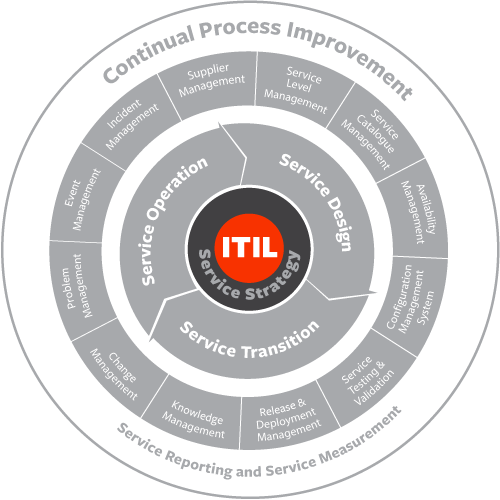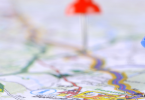What is ITIL service strategy?
ITIL Service Strategy helps organizations understand the merits of using a market-driven approach.

The process helps organizations deliver and support services and products that their customers need by encouraging a practice of service management for managing IT services.
Service strategy process areas include:
- Service portfolio management
- Financial management for IT services
- Demand management
- Business relationship management
- Strategy management for IT services
No organization acts in a vacuum. Customers always have alternatives. Even government and nonprofits where social services compete for tax dollars and contributions.
Download Now: ITIL 4 Best Practice e-Books
These all-new for 2020 ITIL e-books highlight important elements of ITIL 4 best practices. Quickly understand key changes and actionable concepts, written by ITIL 4 contributors.
Competitive forces demand that an IT organization do its job better than the alternatives. What service strategy is about is positioning your organization as non-optional.
Video: ITIL Service Strategy Capabilities
This video focuses on capabilities need for service strategy. Business relationship management, measuring success, Business Service Management and other topics such as social media are discussed related to business potential and service value. (11:26)
Service portfolio management
Service portfolio management (SPM) is a means by which you can dynamically and transparently govern resource investment. The goal of SPM is to maximize value to the business while managing risks and costs. We do this by ensuring that the content of the service portfolio is in line with the organization’s service management strategy.
In cooperation with the change management process it evaluates proposed services. As well as major changes to existing services.
SPM is a cradle to grave process.
It monitors services in the pipeline. First as they proceed through funding, then through design, development, testing, and deployment. Once operational it monitors to ensure we are achieving expected returns. And finally, when the service has reached the end of its useful life, it works with Service Transition processes to ensure an orderly retirement and preservation of essential records and assets.
Financial management for IT service
Financial management for IT services ensures we track and associate IT investment and spending with the services provided.
Why do we need to do this? We want to deliver the best quality service at the lowest possible cost. We want to create business value and increase the opportunity to take on extra projects that result in even greater value to the business.
The three major activities which take place within financial management for IT services are:
- Accounting
- Budgeting
- Charging
(The “ABCs” of financial management).
Accounting involves applying cost accounting principles to IT spending. We do this to answer the question, “What does it cost to provide each service?”
We use Budgeting to show the funding required to support the defined services at a given level of business activity. The budget assures that IT Service Management will have adequate funding to deliver promised services.
Charging is the process of assuring that IT Service Management will “capture” value. That is, that the consumers of services are aware of the cost of providing services to them.
Demand management
ITIL Demand Management Processes & Best Practices ›
Business relationship management
ITIL business relationship management works closely with service portfolio management and strategy management. It helps IT services to inform and implement the strategy and service selection.
Participants in this process seek to form a relationship with customers to understand their needs for service. This involves:
- ensuring that services provided are delivering the value expected by the customer
- understanding the customer’s environment well enough to identify opportunities for new services or new applications of existing services
- being aware of changes in the customer’s business environment which may impact service needs
The most important key performance indicator (KPI) for business relationship management is customer satisfaction.
Strategy management for IT services
ITIL strategy management for IT services seeks to enable IT Service Management to become a strategic asset to the organization. It’s not enough to align IT with the business; IT should also integrate with the business.
Any service provider, to be successful, must have a thorough understanding of the market space in which they operate. They must know what their strengths and weaknesses as a provider are, as well as what opportunities are available. Strategy management for IT services seeks to answer questions such as the following:
- Who are our customers?
- What business outcomes do they need?
- How do the services we provide support those outcomes?
- How can we position ourselves to be the only logical provider of these services?
- What market spaces do we operate in?
- Are there ways to expand our current service offerings into new markets?
- Are there unmet needs in our current market spaces for which we can develop services?








